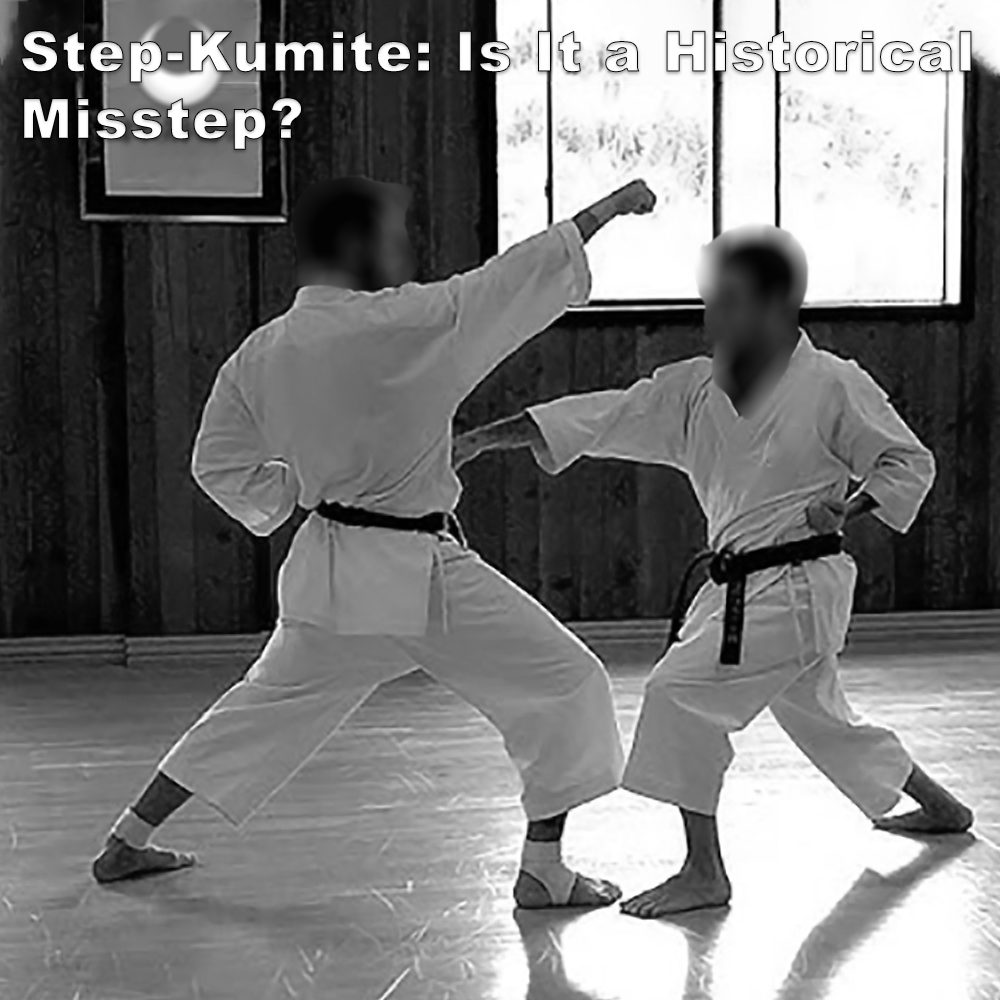
(Approx 2 minute 30 second read)
The article I recently wrote about karate not being purely defensive – that preemption is often necessary – and that, in my opinion, teaching step-kumite at any level is inconsistent with karate for self-defense, drew the usual responses.
.
People telling me how wrong I am. I get quite a bit of that.
.
But what’s missing from most of those messages? The most important part of any training: context.
.
My Page is predominantly about practical, pragmatic karate. It says so right at the top. Missed it? Take another look. So naturally, I always write from that angle.
.
Let’s look at one of the recurring points that keeps cropping up – one I get a lot of comments about: that step-kumite is fine for lower-level students and helps with progression.
.
I don’t like it in the context I teach and train in. It’s ineffective for my goals. And to be honest, it should be for yours, too.
.
The majority of karate taught today emphasizes defensive tactics first. You’re trained to block and then follow up with a counter. This method is everywhere – in kihon, in step-kumite drills, and in how kata is often interpreted.
.
From your very first class, you’re shown how to hard block and counter. And in step-kumite, this becomes the habit you’re building – a consensual exchange. But that has very little relevance to the real world.
.
A reaction, by nature, comes after an action. That means delay – and more importantly, it means mental processing, where your mind is busy catching up.
.
In my view, the traditional block-and-counter approach is less practical when dealing with real threats. You have to take the initiative – respond before the attack fully develops and take control. It’s faster to act than it is to react.
.
Someone recently commented on teaching step-kumite at different levels to assist with progression. I’ll ask again – why?
.
From the context I write and teach from, this approach is fundamentally flawed.
.
Here’s why: The distancing is wrong. The timing is wrong. Attacks don’t start from six feet away. Blocking is slower than preemption. No one steps back repeatedly while blocking and eventually counters. Violence happens at close range. Hands are inactive. There will be ferocity and rage. Any attack will likely be a distraction. I could go on.
.
This kind of training is poor progressive training – because it doesn’t actually progress. The timing and distancing of step-kumite only exist within that drill. You never see that kind of exchange in sparring or in real self-defense.
.
It’s also poor compliant training. It only works if your partner does exactly what they’re told. It’s reliant on cooperation – and has no real value in a broader training matrix. There’s nothing about it that survives once compliance is removed.
.
We can, and should, use pre-arranged drills that reflect real fighting and self-defense – drills that teach proper distancing, realistic timing, sound tactics – and that can be scaled up to semi-live and live work without having to reinvent the wheel.
.
So why do we still practice step-kumite?
.
Because the karateka of the 1930s and ’40s poorly copied the practices of judo and kendo – and it stuck. It works in kendo because they use long-range weapons, where timing and distancing work very differently.
.
But in karate, it’s a historical round peg forced into a square hole. A relic of karate’s rapid expansion in Japan. It serves no modern purpose. It’s not classical. It’s not functional.
.
If you choose to practice it for fun or for tradition, that’s your decision. But as always – train with the right context in mind.
.
For me, and for the objectives of my training – it’s a waste of time at any level.
.
.
Written by Adam Carter
